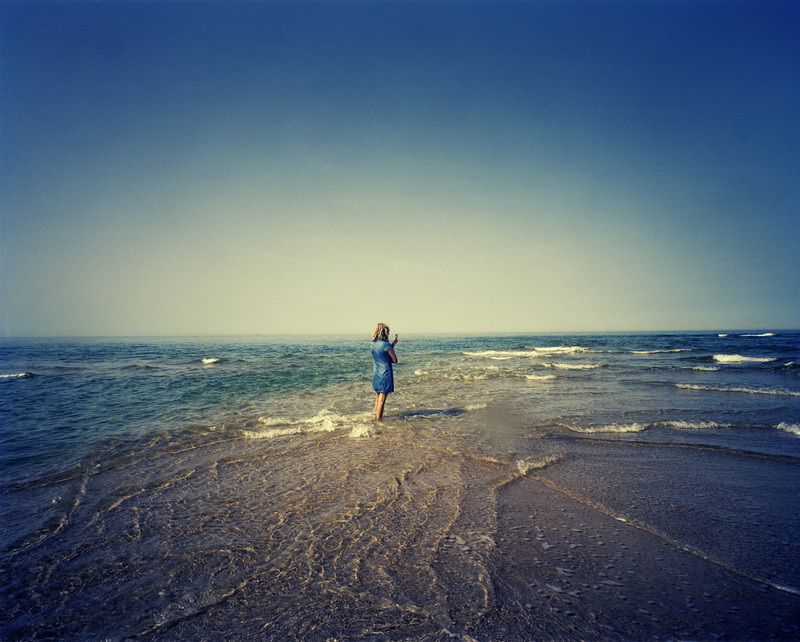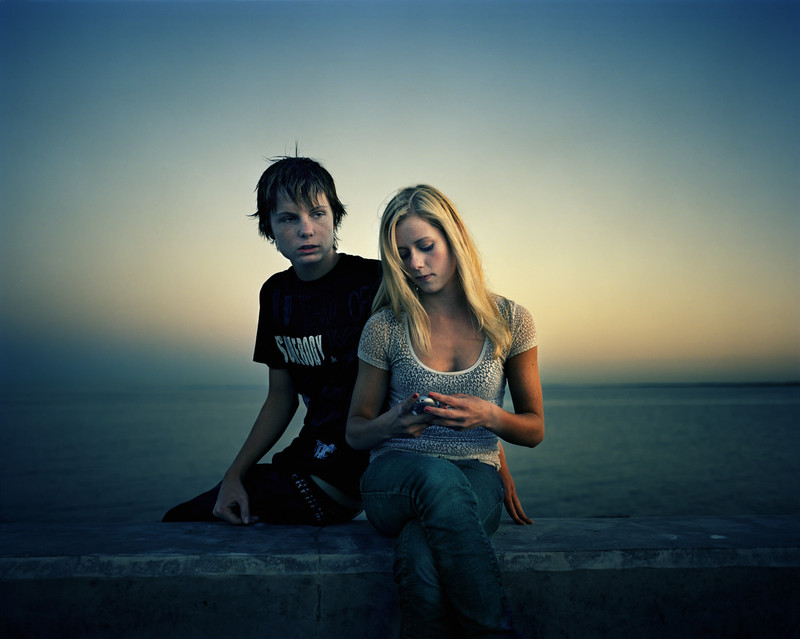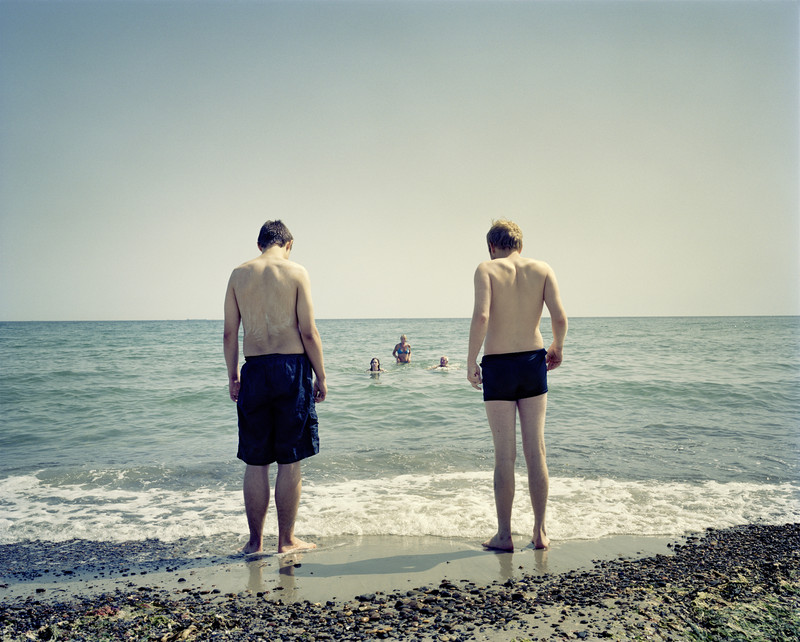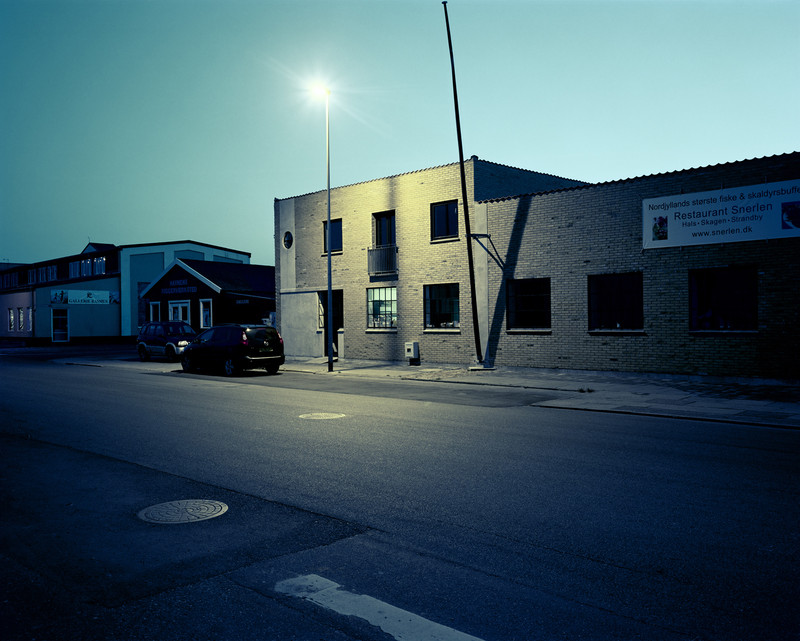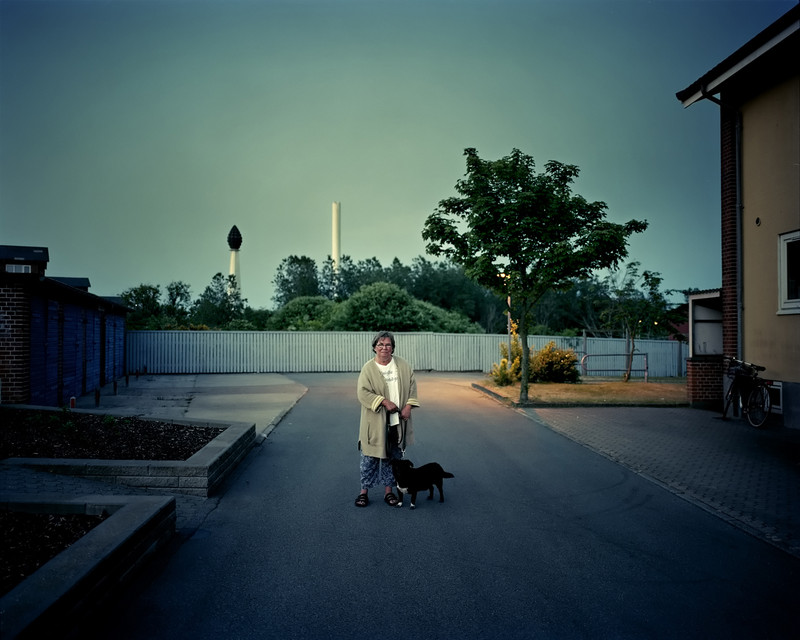Skagen
© Joakim EskildsenWhat is Skagen to me? I love water and sea, I love small places, I'm not a big city photographer and I love the west coast of Denmark, but especially Skagen. It's the end of this country, and then the two lakes come together, and of course that's special, and then this story that it used to be a super isolated place and the artists' colony. It's completely different today. It's THE tourist place in Denmark, everyone has their holiday homes there, it's crowded like Venice. Nevertheless, it is very fine and very beautiful. But I don't find that all that interesting. But what I find interesting are the painters.
Do the Skagen painters influence your work?
Nowadays, documentary or fine art photographers have their subjects and follow them. The Skagen painters at that time often painted the family, the daughter, the son, the wife, a wedding, the friends - just what the people in the area did. That's actually exactly where I want to go. So not the typical work of photographers – traveling and seeing the world – but simply doing something right in front of your feet. That you work where you live. For example, I like to go to my village and photograph my village. And I take pictures of my family and my garden. That's how the Skagen painters did it too. That was normal 150 years ago.
What is different if you only have short commutes to work?
To me it's like a farmer's life, a fisherman's life, such an old-fashioned way of life that your world is a small one and you don't have to travel tens of miles every day to do what needs to be done. That's such a calm. And when a lot of people do it, there is also a lively forward-thinking community.
What is important to you in your art?
Authenticity. I have a thought about an ideal form of life and the connection between man and nature. The best pictures of me are the ones where it all coincides, is in balance, where everything leads to that dream – or reality. For example, my grandmother, she lived in a 200-year-old house, everything was so easy to understand there: it was easy, protected from the rain, firewood was used for heating, she had almost everything she ate in the garden. She was a role model for me on how to live. She got up early and did a thousand things, she was a jack of all trades and she had a good balance between the challenge of learning new things, always having something to do and leaving only a small ecological footprint.
I try to live how I want my pictures to look. That's my plan. That my life should be one big picture is fun now, but it's a bit like that. I try to have materials in my home that make a photo look really good. I once had the experience of taking pictures at my parents house and I was like, oh my god, I don't like all this stuff. The light was good, but everything else was not. I realized I want to show something. I don't just want to show it in pictures, I want to live it that way myself.
What is light for you?
Light is almost everything. It is the beginning, the source of life. Also the beginning of my inspiration. Content only interests me half as much as the mixture of light. Light is also wisdom. They also say that I didn't see it in the right light. After the light comes the content. Without content, light doesn't help much either. Then it's just aesthetics.
You learned from former royal court photographer Rigmor Mydtskov. What did you take with you?
She photographed one or two people a day and I was her assistant. She was an old woman and she's dead now. I was very young, about 15 when I started there. She talked a lot about light. She said to me, look here, can you see these shadows, raise the lamp, do you see how the face is shining now? This was her way of explaining how the subjects should move their heads. I also learned how to talk to people to make them feel good. Uncertainty breeds uncertainty, she always said. If the photographer is unsure, the person being photographed will be too. It's okay if you don't know your goal when you start. You have to trust your gut feeling.
You now live near Berlin...
I was born in Denmark, lived in Finland for 13 years, then returned to Denmark and came to Germany almost eight years ago. I really feel at home here. My wife is from Finland but grew up in Germany. The people here are not much different than in Denmark.
I am now in my 14th year with my Home Works series of which the Skagen pictures are a part. I have a chapter for a book from each of the seven places I've lived. At the moment it has 450 pages. I take photos in my house, in the garden – almost every day.
You also photograph your children. Are the pictures posed?
No. I set up my tripod and take the picture. You can't recreate many situations, especially with young children. The trick is to take pictures when something happens.
click to view the series in the archive


